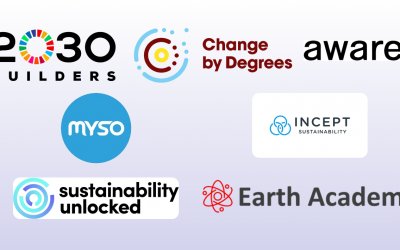While many companies have recognized the importance of implementing sustainable practices, they often struggle with how to effectively activate employees in the process. Employee engagement has long been considered a key factor in driving sustainability initiatives, but there is a growing recognition of the need for employee activation – a more proactive and holistic approach that goes beyond simple engagement.
In this article, we will explore the difference between employee engagement and employee activation in the context of sustainability and delve into what it truly means to activate employees in the journey towards a more sustainable future.

Employee Engagement vs. Employee Activation
Employee engagement refers to the level of involvement, commitment, and enthusiasm that employees have towards their work and the organization. In the context of sustainability, engaged employees may participate in eco-friendly initiatives, follow sustainable practices, and contribute to sustainability goals set by the company. However, engagement alone may not be enough to drive meaningful change. It can sometimes be limited to surface-level involvement and passive compliance with sustainability measures without a deep understanding or personal connection to the cause.
On the other hand, employee activation takes a more proactive and comprehensive approach to involving employees in sustainability efforts. It goes beyond engagement by empowering employees to take ownership and drive sustainability initiatives within and beyond the workplace. Employee activation involves inspiring and motivating employees to actively contribute their skills, knowledge, and passion towards sustainability goals. It entails fostering a mindset shift towards sustainability, encouraging critical thinking, and empowering employees to identify and act upon sustainability opportunities in their daily work and beyond.

The Meaning of Employee Activation
At its core, employee activation in sustainability means creating an environment where employees are not only engaged, but also empowered and inspired to take action towards sustainability. It involves instilling a sense of purpose and personal connection to sustainability within employees, so that they become champions of change rather than passive observers. Employee activation means equipping employees with the knowledge, skills, and resources necessary to contribute to sustainability initiatives, and fostering a culture that values and rewards sustainability-driven behaviours. It also involves encouraging employees to think innovatively and collaboratively, and to contribute their unique perspectives and ideas towards solving sustainability challenges.

Why Employee Activation Matters
Employee activation is crucial for driving sustainable change within organizations for several reasons:
- Genuine Commitment: employee activation fosters a genuine commitment to sustainability, going beyond superficial engagement. When employees are actively involved in sustainability initiatives, they are more likely to take ownership of the cause and be personally invested in its success.
- Innovative Solutions: activated employees can bring fresh perspectives, ideas, and innovation to sustainability challenges. By tapping into their diverse skills and expertise, organizations can unlock new and creative solutions to sustainability issues, driving positive impact.
- Organizational Culture: employee activation can help shape a sustainability-driven culture within the organization. When sustainability is embedded in the values, norms, and practices of an organization, it becomes an integral part of the organizational DNA, leading to long-lasting change.
- Long-term Impact: sustainability transformation is not a one-time event, but a continuous journey. Employee activation recognizes this and encourages employees to adopt a long-term perspective towards sustainability, leading to sustained efforts and outcomes.

Strategies for Employee Activation
Activating employees for sustainability requires a strategic approach that goes beyond superficial engagement. Here are some key strategies to consider:
- Leadership Commitment: leadership buy-in and commitment to sustainability is crucial in driving employee activation. When leaders actively support and prioritize sustainability initiatives, it sends a clear message to employees that sustainability is a core value of the organization. Leaders should lead by example and demonstrate their commitment through their actions and decisions.
- Inclusion and Collaboration: involving employees in the decision-making process and encouraging collaboration can foster a sense of ownership and empowerment. Employees should be encouraged to share their ideas, perspectives, and feedback on sustainability initiatives. Creating cross-functional teams or sustainability task forces can also facilitate collaboration and enable employees to work together towards common sustainability goals.
- Recognition and Incentives: recognizing and rewarding employees for their sustainability contributions can reinforce desired behaviours and motivate further engagement. This can include formal recognition programs, performance evaluations that include sustainability metrics, and incentives such as bonuses, promotions, or other tangible rewards that recognize and appreciate employees’ sustainability efforts.
- Integration into Performance Metrics: linking sustainability goals to employees’ performance metrics and evaluations can create accountability and drive behaviour change. By aligning sustainability objectives with employees’ key performance indicators (KPIs), employees are more likely to prioritize sustainability in their day-to-day work.
- Communication and Transparency: clear communication about the organization’s sustainability goals, progress, and impact is crucial in engaging and activating employees. Regularly sharing updates, successes, and challenges related to sustainability initiatives can keep employees informed and engaged. Transparency in reporting sustainability metrics and progress can also build trust and credibility among employees, reinforcing the importance of their contributions.
- Training and Development: providing ongoing training and development opportunities related to sustainability can enhance employees’ knowledge and skills, empowering them to contribute more effectively to sustainability initiatives. This can include workshops, webinars, certifications, or other professional development opportunities that enhance employees’ sustainability competencies.
- Empowerment and Autonomy: giving employees the autonomy and authority to take ownership of sustainability initiatives can drive activation. Employees should be encouraged to take initiative, be creative, and make decisions that align with sustainability goals. This can include giving employees the freedom to experiment, innovate, and implement their sustainability ideas.

Conclusion
Employee activation in sustainability is a dynamic and ongoing process that goes beyond traditional employee engagement. It involves empowering employees to take ownership, drive change, and contribute their unique perspectives and skills towards sustainability goals. By fostering a culture of activation, organizations can create a sustainable mindset among employees, leading to long-lasting change and positive impact. Implementing strategies such as education and training, leadership commitment, communication and transparency, training and development, can effectively activate employees and drive sustainability transformation within organizations. When employees are activated, they become champions of sustainability, contributing to a greener future for the organization, its stakeholders, and society.
Discover how 2030 Builders facilitates organizations in promoting sustainability among their employees by guiding them through a progression from awareness to accountability and advocacy, which encompasses various stages such as education, skill development, and participation.
Book a demo here.




0 Comments